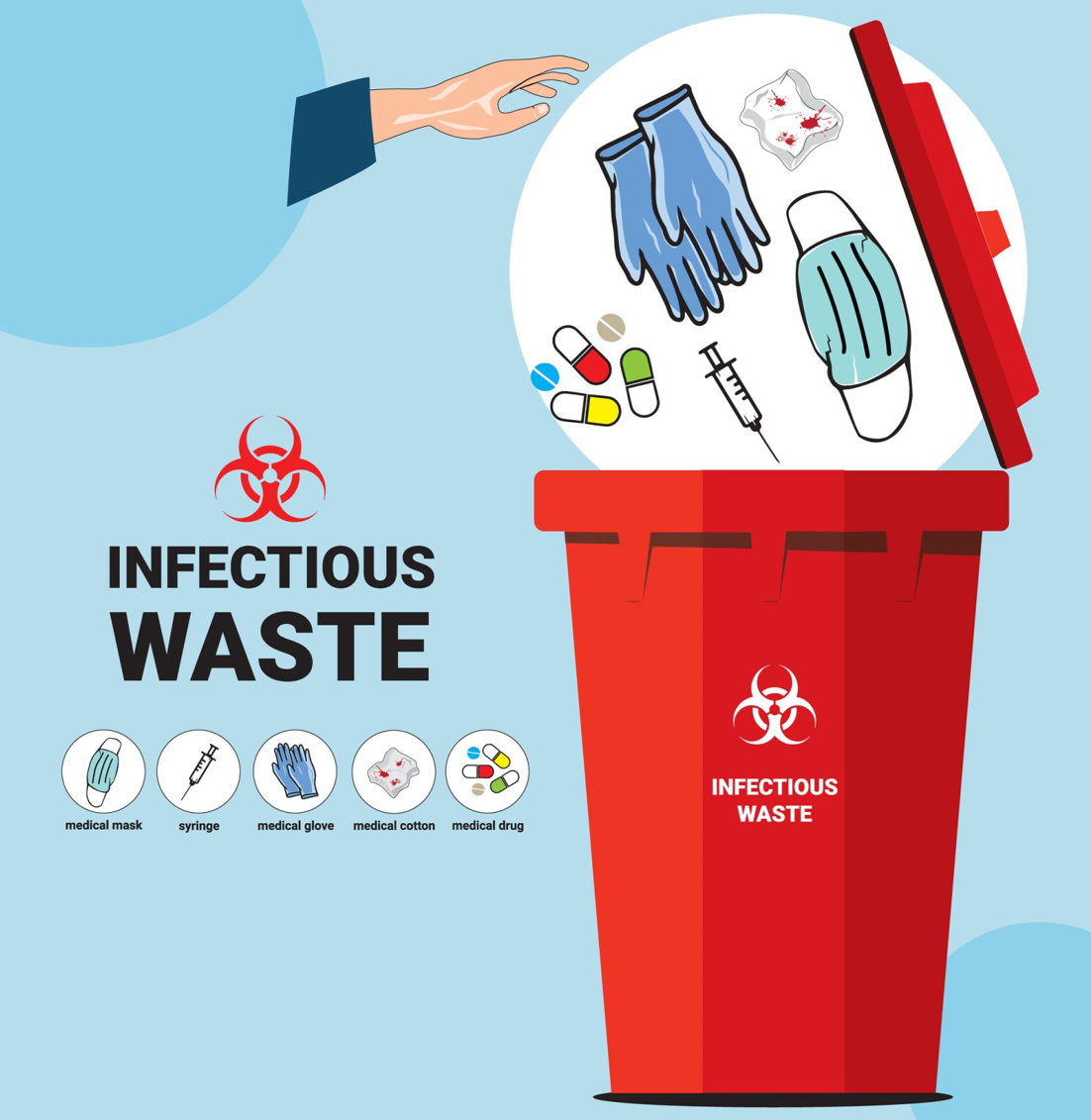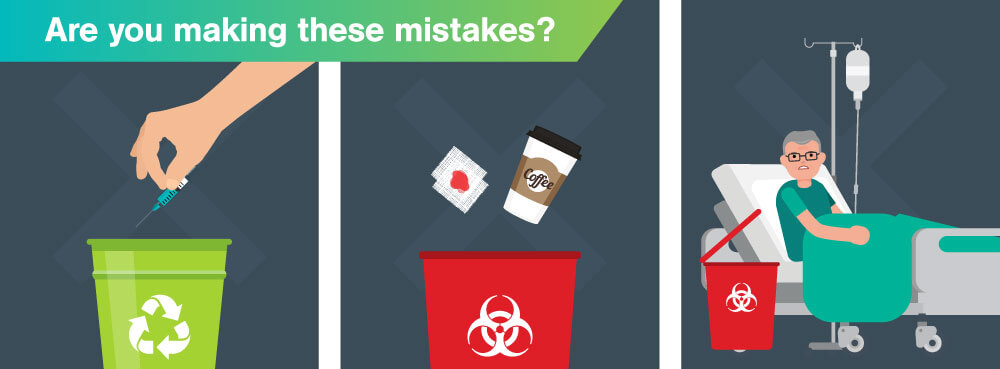Conformity and Rules for Medical Waste Disposal
Conformity and guidelines for medical garbage disposal play a vital role in making certain the security and health of both health care specialists and the public. Correct management of clinical waste is important to protect against the spread of infections, safeguard the setting, and maintain public wellness. This requires adherence to certain guidelines and procedures established forth by regulative firms and bodies. These regulations include various elements, consisting of the classification and partition of clinical waste, proper storage space and taking care of procedures, in addition to transport and disposal methods. By complying with these laws, healthcare facilities can lessen the threat of contamination and potential damage to people and the setting. This article will check out the relevance of conformity and provide an introduction of the vital regulations governing medical waste disposal.
Significance of Compliance
The significance of conformity with laws for clinical garbage disposal can not be overstated. Proper disposal of medical waste is crucial for ensuring the safety and security and health of health care workers, clients, and the general public. Clinical waste, which consists of products such as used needles, contaminated handwear covers, and biomedical waste, can posture significant wellness dangers if not taken care of and dealt with properly.
Conformity with policies ensures that clinical waste is handled in a manner that decreases the capacity for exposure to damaging substances and contagious diseases - medical waste removal. It aids avoid the spread of infections, such as HIV, liver disease B and C, and other bloodborne virus. Compliance additionally plays an important duty in safeguarding the setting by stopping contamination of water resources, soil, and air
Failing to abide by policies can cause severe effects for healthcare facilities, consisting of fines, lawful activity, and damage to their track record. Additionally, non-compliance may endanger the health and safety and security of healthcare workers, people, and the neighborhood.
Conformity with regulations for medical garbage disposal requires adherence to particular standards and methods. These may include appropriate partition, product packaging, labeling, and storage of medical waste. It likewise entails using authorized disposal techniques, such as autoclaving, incineration, or landfilling, relying on the kind of waste.
Regulatory Agencies and Bodies
Regulatory companies and bodies play a critical role in overseeing compliance with policies for medical garbage disposal. These companies are liable for establishing requirements, procedures, and guidelines to make sure the secure and appropriate handling of medical waste. They check and apply conformity to safeguard public health and wellness and the setting.
One of the most noticeable regulative agencies in the United States is the Epa (EPA) The EPA is accountable for managing the storage space, transportation, treatment, and disposal of medical waste. They develop guidelines for waste generators, transporters, and therapy facilities to follow, guaranteeing that all necessary preventative measures are required to avoid the spread of diseases and contamination.
An additional crucial regulatory body is the Occupational Safety And Security and Health And Wellness Administration (OSHA) OSHA establishes requirements and regulations to protect employees from work hazards, consisting of those pertaining to clinical waste. WasteX Medical Waste Disposal. They supply guidelines for the risk-free handling and disposal of medical waste to secure employees in medical care facilities
In enhancement to these federal companies, specific states likewise have their very own regulative bodies that oversee clinical waste disposal. These firms may have their very own details policies and needs that must be complied with.

Category and Partition of Medical Waste
To guarantee correct management of medical waste, it is necessary to classify and segregate it according to established protocols and guidelines. medical waste removal service. Classification and partition play an important duty in minimizing the risk of infection, securing the setting, and making certain the safety of healthcare workers and the general public
Medical waste is categorized into different classifications based upon its possible threat degree. These groups consist of transmittable waste, pathological waste, sharps waste, pharmaceutical waste, chemical waste, and contaminated waste. Each category requires specific handling, transport, storage space, and disposal techniques to reduce the risk of exposure and contamination.
Segregation of clinical waste entails dividing various types of waste at the source. This process guarantees that waste with different risk levels is not mixed, reducing the potential for cross-contamination and making disposal procedures extra reliable. Correct partition is attained with using color-coded labels and containers, which help healthcare employees and waste monitoring workers determine and manage each type of waste appropriately.
Along with classification and partition, medical care facilities must also stick to local, state, and government laws relating to medical waste monitoring. These guidelines describe certain demands for storage space, transportation, treatment, and final disposal of medical waste, making certain compliance and preserving public health and wellness and safety.
Correct Storage Space and Taking Care Of Procedures
Proper storage space and managing procedures play a crucial role in making certain the certified and risk-free management of clinical waste. Medical waste, which consists of products such as used syringes, infected gloves, and ended medicines, can pose significant health and wellness and ecological dangers if not managed correctly. Consequently, it is vital for healthcare centers and other generators of clinical waste to implement stringent storage space and dealing with methods.
To start with, medical waste must be stored in resilient, watertight containers that are specifically created for this objective. These containers ought to be identified with the global biohazard symbol and the words "clinical waste" to clearly suggest the materials. Furthermore, the containers ought to be kept firmly near avoid any type of possible leakage or splilling.
Additionally, it is essential to set apart different kinds of medical waste to stop cross-contamination. Sharps, such as scalpels and needles, should be kept in puncture-resistant containers to lessen the threat of injuries - WasteX Medical Waste Disposal. Chemical waste, such as anti-bacterials and solvents, should be stored separately from other kinds of medical waste to avoid hazardous exposures or chemical reactions

Transport and Disposal Techniques
Health care facilities have to make sure the safe transport and appropriate disposal of their medical waste to follow guidelines and safeguard public wellness. Transportation and disposal approaches play a critical function in avoiding the spread of transmittable illness and reducing the ecological effect of clinical waste.
To deliver medical waste, medical care facilities need to utilize watertight and puncture-resistant containers that are classified with the biohazard sign. These containers should be firmly sealed to avoid any leakage throughout transportation. In addition, healthcare centers should establish methods for the transportation procedure, consisting of using skilled employees and devoted lorries.
Once the medical waste reaches the disposal center, it undertakes various approaches of therapy - WasteX Medical Waste Disposal. One usual approach is incineration, which entails melting the waste at high temperature levels to damage virus and lower the quantity of waste.
It is essential for healthcare facilities to deal with licensed and permitted waste management companies to ensure proper transport and disposal of clinical waste. These firms have the expertise and resources to handle medical waste securely and in conformity with laws.
Verdict
To conclude, conformity with guidelines for medical waste disposal is of utmost significance to ensure public health and security. Regulative agencies and bodies play an essential role in applying these guidelines. Appropriate classification and partition of medical waste, as well as adhering to proper storage and handling treatments, are important to discover here avoid contamination and the spread of diseases. Ample transport and disposal methods have to be carried out to reduce ecological effects. Overall, adherence to conformity and guidelines is essential to successfully manage clinical waste.
Clinical waste, which includes things such as made use of needles, contaminated handwear covers, and biomedical waste, can pose major wellness risks if not managed and disposed of properly.
These classifications consist of infectious waste, pathological waste, sharps waste, pharmaceutical waste, chemical waste, and radioactive waste.Partition of clinical waste entails separating different kinds of waste at the resource. Proper segregation is achieved with the usage of color-coded labels and containers, which help health care employees and waste monitoring personnel handle each type and determine of waste properly.
Chemical waste, such as solvents and anti-bacterials, should be stored individually from other kinds of clinical waste to protect against dangerous direct exposures or chemical responses.